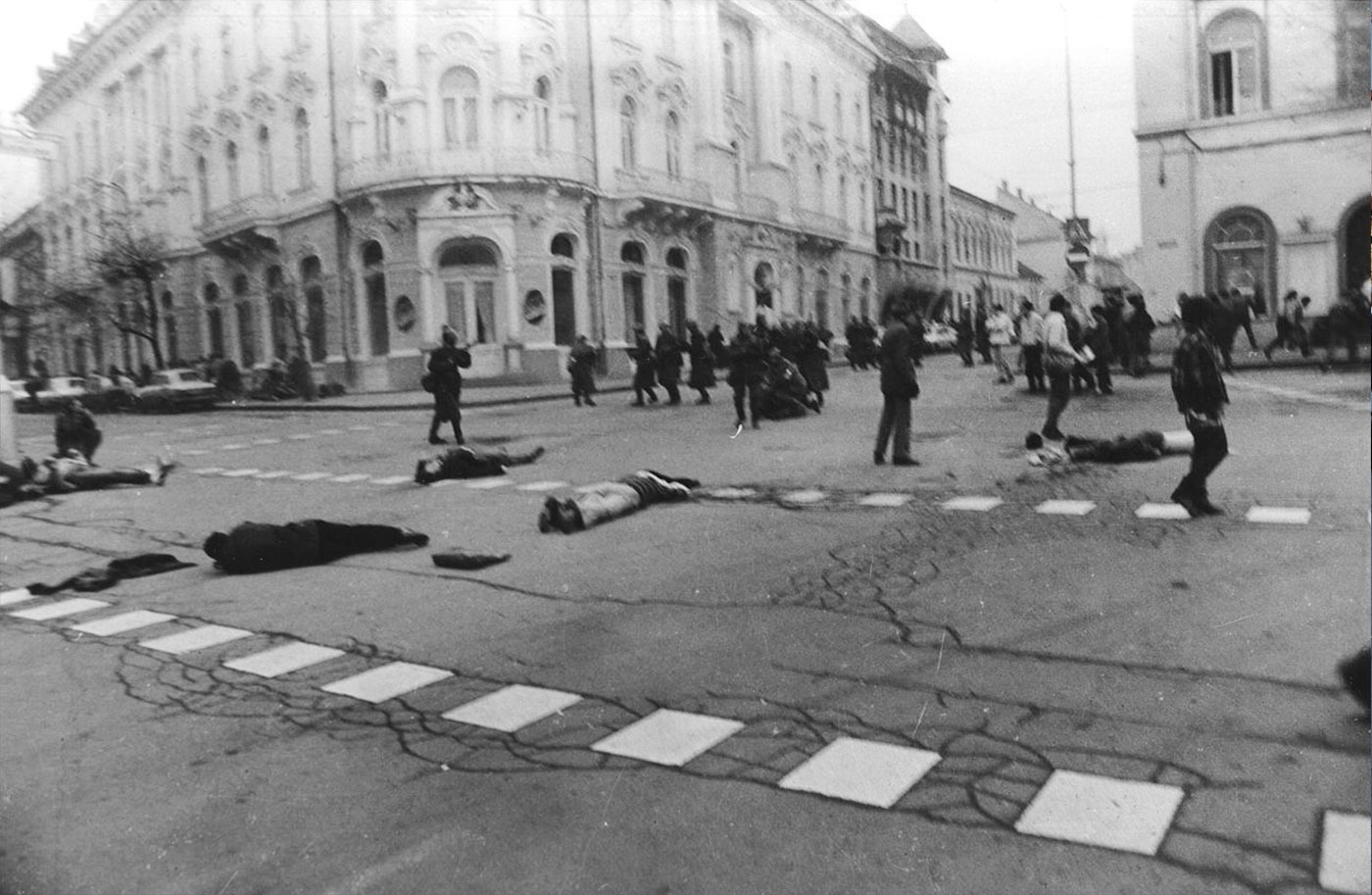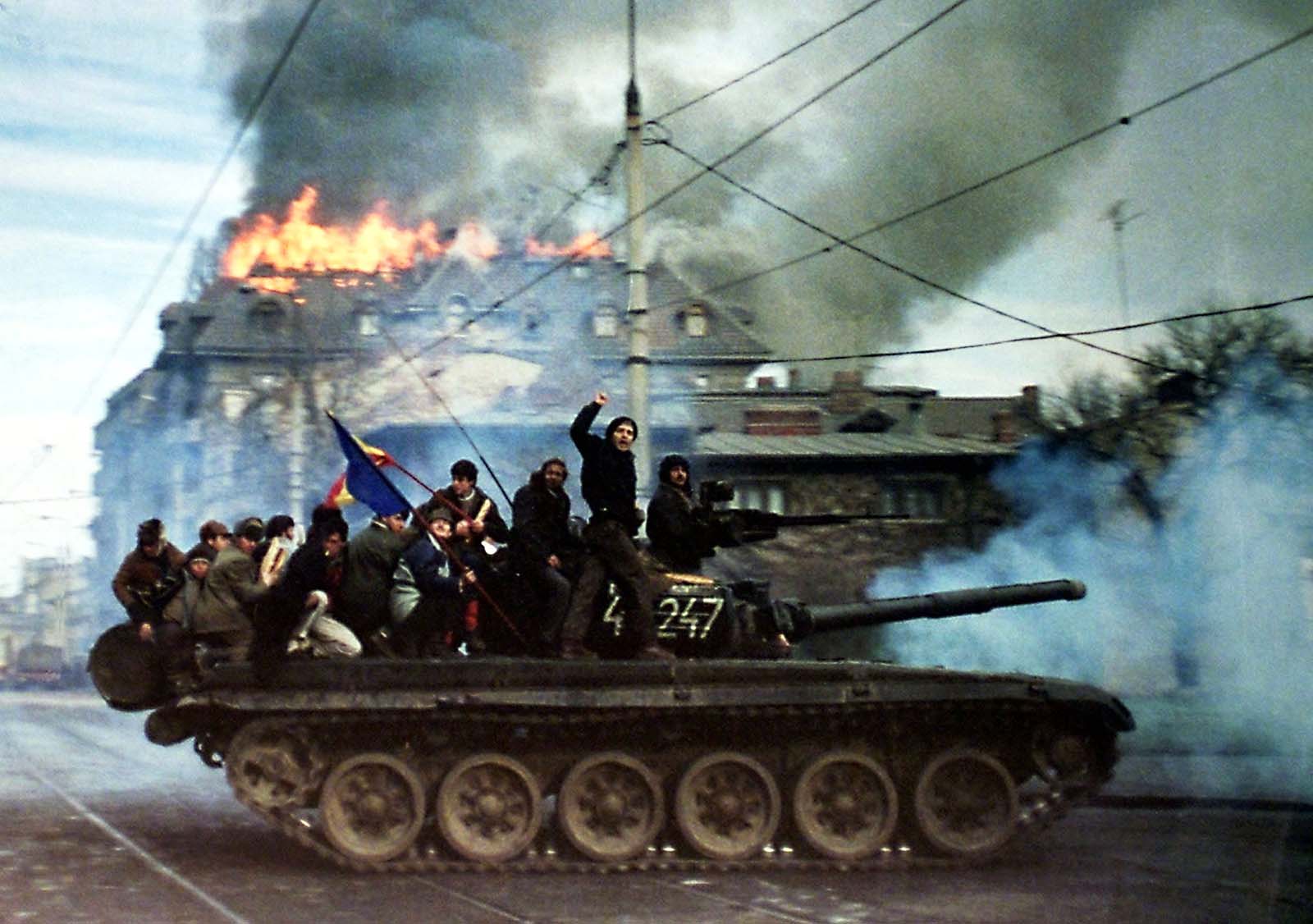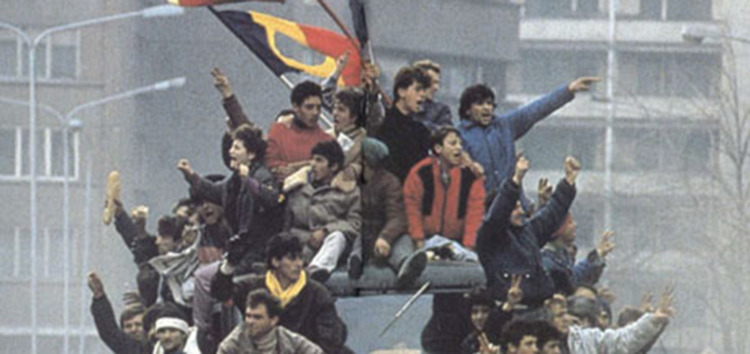Timișoara and the Romanian Revolution of 1989
Leading up to the 1989 Romanian Revolution, RFE/RL broadcasted news of Hungary, Czechoslovakia, Bulgaria, Germany, and Poland's revolutions that occurred earlier that year. Romanians began to wonder if similar changes would also happen in Romania.
RFE/RL played a key role in communicating to the rest of Romania about what was happening in Timișoara. People who initially rallied in support of Pastor Laszlo Tokes began protesting the communist government. The army received orders to open fire on the population, and outrage ensued when the rest of the country heard about this from RFE/RL.
Warning! Viewer discretion is advised for the image below!

(Rotta, Razvan."An Intersection in Cluj Littered with the Dead and Dying After They Had Protested the Timișoara Killings and Were Gunned Down by Soldiers." 15-22 Dec. 1989. Photograph. RadioFreeEurope/RadioLiberty.)
"After the start of the revolution in Timișoara, an American consul who was in Timișoara and two Japanese diplomats... were able to transmit to their respective countries the news that in Timișoara the army shot at civilians and at least one was dead. We came into possession of the information transmitted by the American."
—Emil Hurezeanu, RFE/RL radio host ("Ne-am intors!" 19 Oct. 2019)
The Romanian Communist Government ordered for the bodies of the people killed in Timișoara to be burned—they were ready to cover up the entire event. The death toll estimation in Timisoara is between 750 and 4,500 people.
If not for RFE/RL broadcasting the event on December 18, 1989, the government could have erased all evidence of their crime, the rest of Romania would not have known about the events in Timișoara, and the Romanian Revolution of 1989 would not have started.
Clips of the RFE/RL broadcast from December 18, 1989, with the English translation of an extended version of the clip:
Radio recording: (Ionica, "[Radio Europa Liberă] 18 Decembrie 1989: Timișoara în revoluție," 18 Dec. 1989)
Didona and Iulian Crainiceanu told me that they heard about Timișoara from a family friend and when I asked how the friend knew about Timișoara, they answered:
"He told us clearly that he listened to Radio Free Europe. He was a friend of the family and still is today."
—Didona Crainiceanu, Personal interview conducted as a part of NHD research (Inteview, Didona and Iulian Crainiceanu, 24 Jan. 2021)

(Paris, Denoel. "Romanian Demonstrators Sit on Top of a Tank as it Passes in Front of a Burning Building, December 22, 1989." 22 Dec. 1989. Photograph. Rare Historical Pictures.)
Since the Romanian media was still under the control of Ceaușescu, RFE/RL was the only source where people could learn about the events at Timișoara.
On the days following December 18, 1989, RFE/RL broadcasted the rapidly changing status of the Romanian Revolution. News of people in foreign countries protesting in solidarity with the Romanian people encouraged the listeners in Romania.
RFE/RL celebrated with Romanians when Ceausescu was overthrown on Christmas day, 1989.

(Paris, Denoel. "Romanians Celebrating the Fall of Ceaușescu on a Military Tank." 22-25 Dec. 1989. Photograph. European Bank.)